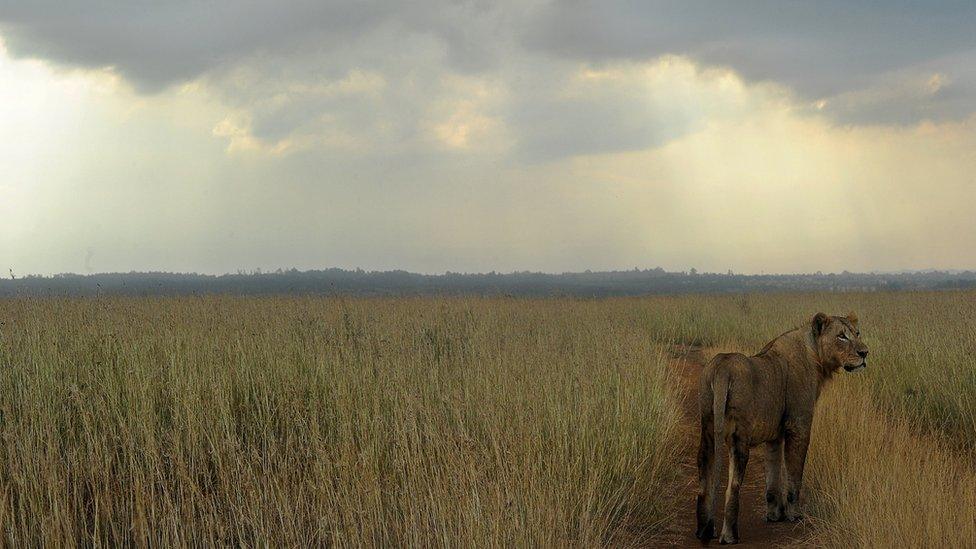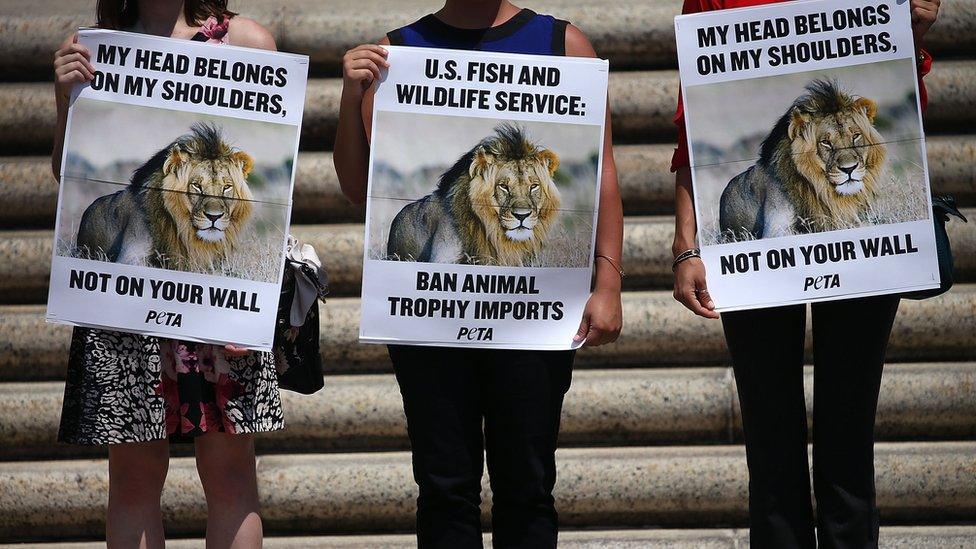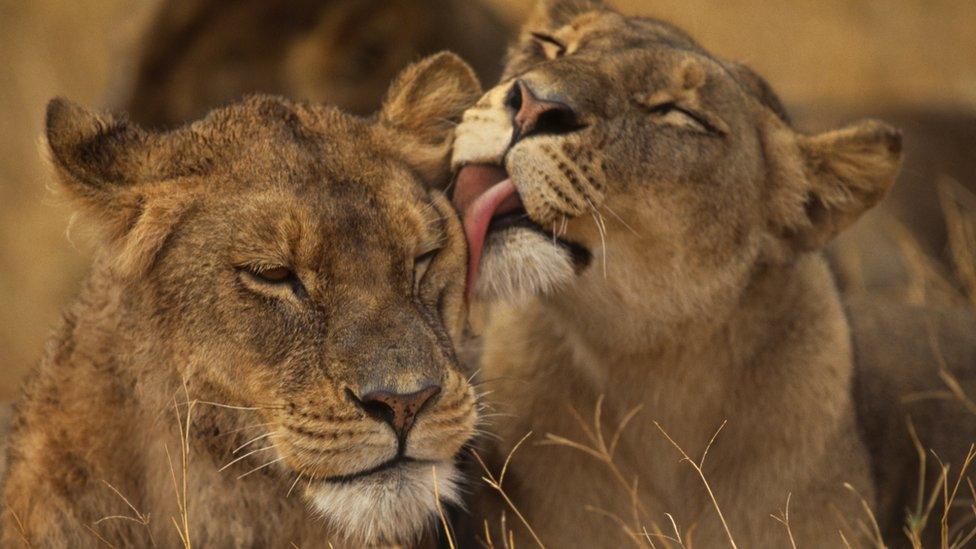African lions likely to gain enhanced protection status
- Published

Lions in Africa are threatened by loss of habitat and prey as well as by trophy hunting
African lions are set to gain greater international protection this year in the wake of the killing of Cecil by an American dentist in Zimbabwe in 2015.
Tough new US regulations on the importation of lion trophies will come into force on 22 January.
Separately, the global body that governs trade in species also expects moves to enhance the status of lions in 2016.
The number of lions in Africa has declined by half since the 1990s.
Global attention was focused on the plight of the African lion after Minnesota dentist Walter Palmer killed Cecil, who had been lured from Zimbabwe's Hwange national park, last July.
In December, the US Fish and Wildlife Service announced, external that lions from central and western Africa would be classified as endangered while those from southern and eastern Africa would be seen as threatened.
The move will make it significantly more difficult to import lion heads, paws or skins from all parts of the continent.
Campaigners welcomed the move and believe it could see the end of "canned" hunting, the practice of rearing lions in captivity who are then shot by hunters who pay huge sums for the privilege.

There were protests in many parts of the world in the wake of the killing of Cecil the lion
In South Africa the number of lions at breeding facilities almost doubled between 2005 and 2013, spurred by the increasing demand for trophy hunting.
The US imported trophy parts from 741 lions in 2014, of which 373 were killed in canned hunts.
Some 90% of the hunters using these facilities were from the US and the new restrictions could have a big impact on this industry.
"We certainly view this as a progressive step," said Mark Jones from the Born Free Foundation which has campaigned for the change in the US.
"One of the factors we're concerned about is poorly managed trophy hunting operations and the listing will impose requirements on US citizens who wish to import lion trophies from Africa."
"We are encouraging EU countries to look closely at this issue and restrict or ban the imports of trophies accordingly."
African lions are now listed under Appendix II of the Convention on the Trade in Endangered Species, external (Cites), meaning that trade in the creatures is regulated by permit.
Many voices are now pushing for an upgrade to Appendix I, which would see all trade banned.
In an interview with the BBC, the head of Cites, John Scanlon, said he expected such a move at the Convention's key meeting in South Africa in September, external.
"It is up to one of our 181 parties but I would expect that something could well come forward on African lions, and certainly our animals committee have been working on the issue and it is in serious decline in some regions, decline in others and increasing in some others," he told BBC News.

There has been significant growth in the number of lions raised for trophy hunting
Upgrading lions to Appendix I is likely to have a significant impact on the trade in lion bones.
Exports of these bones from South Africa have boomed in recent years. Between 2008 and 2011, a study found that 1,160 lion skeletons were legally exported, external, with 91% of the bones going to Laos.
"The legally declared export of lion bones has more or less tripled over the last decade," said Mark Jones.
"What we are seeing is trade in lion bones as a replacement for increasingly rare tiger bones - this is an increasing concern for a species that is in pretty serious decline, so we would support an Appendix I listing for lions, across the continent and we do expect to see a proposal at the Cites COP later this year."
It is unknown at this point if such a move will be able to garner the two thirds support needed at a Cites conference of the parties meeting to change the status.
In South Africa and other southern countries, wild lion populations are stable and they may oppose the change. It is possible that a split listing may be agreed.
And while the killing of Cecil certainly increased public focus on the issue of trophy lion hunting, experts believe that the current changes being mooted are the result of longer term scientific investigation by groups like the International Union for the Conservation of Nature, external (IUCN). These indicate that loss of habitat and prey are the main reasons behind the decline.
"There has been through the IUCN a lot of work done on the conservation status of the lion across the African continent," said John Scanlon from Cites.
"I would say this work through the Cites periodic review committee and through IUCN has predated the Cecil incident by some way but that incident has certainly given a lot more public attention to the fate of the lion."
Follow Matt on Twitter @mattmcgrathbbc, external.